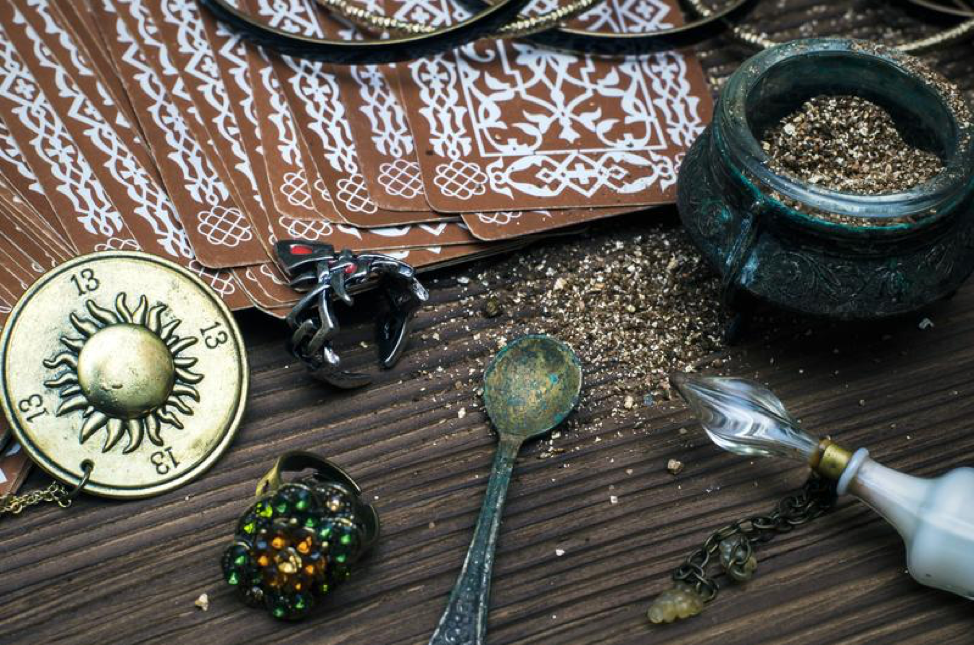In modern times, card readings, palm reading, and astrology charts are typically seen as “new age” beliefs associated with popular spiritualist movements. However, these divination techniques are actually time-honored traditions that date back to ancient times. They have been used in countless societies and cultures throughout thousands of years. Keep reading to learn all about the rich history behind these techniques for divining.
Tarot Cards
According to The Ultimate Psychic Readings Guide, tarot card readings are one of the most popular and sought-after psychic reading methods. Many psychic readers work with the Tarot, a powerful psychic tool which provides deep insights into the past, present, and future.
Playing cards were first invented in China around 9th century AD before being refined in the Mamluk Sultanate of Egypt. By the time they made their way to Europe in the late 1300s, the standard pack had four suits of sticks, coins, swords, and cups. Italians added allegorical illustrations to the standard deck of cards, and the classic Tarot deck was created by 1450. People initially used these cards to play games, but many came to believe that they could divine things by examining the cards.
Their origin in Egypt allowed practitioners to link the cards to various ancient Egyptian magical practices. The 78 card deck that esotericists use today came into being by 1789, and Jean-Baptiste Alliette was one of the first to set down official divination methods for the cards. Since then, Tarot cards have remained almost unchanged. The only significant difference is that some deck styles use different names for the court cards, suits, and trump cards. The three most popular variants are the Marseilles deck, the Rider-Waite deck, and the Thoth deck.
Palm Reading
The idea of being able to read one’s character and potentially future through the details of their palms shows up in a variety of Eurasian cultures. The first official reference shows up in 5th century BCE Hindu text titled “The Teachings of Valmiki Maharshi on Male Palmistry.” References to palmistry are also found in Nepal, China, Persia, Sumeria, Babylonia, Egypt, and Greece. In ancient Greek times, palm reading was associated with the god Hermes, and Alexander the Great reportedly enjoyed reading the palms of his officers to see their character.
When the Catholic Church came to power, there was an active campaign to suppress chiromancy which was their name for palm reading. The church called it one of the “seven forbidden arts,” and it was outlawed alongside aeromancy, pyromancy, hydromancy, and other forms of magic. After centuries of suppression, palm reading was usually only found in fringe communities like the Roma.
However, the Victorian interest in the occult led to a revival of palm reading, and Casimir D’Arpentigny published his seminal text, La Chirognomie, in 1839. The Cheirological Society of London was set up in 1889 to denounce charlatans and create a system for the art of palmistry. Even skeptics like Mark Twain visited London to have their palms read, and Twain reported that palmist Cheiro “exposed my character to me with humiliating accuracy.” Modern palm readers still use much of the research codified during the 1800s and continued with their method that involved focusing on the life, heart, head, sun, Mercury, Venus, travel and fate lines.
Astrology
Astrology is one of the oldest methods of divination still in use today. Even the earliest ancients spent time searching for meaning in the sky. By 2100 BCE, the Babylonians believed that constellation positioning could affect their lives or predict the future. The Mesopotamians in 1650 BCE were the first to create a zodiac, and this zodiac profoundly influenced later Greek astrology. Around the same time, the Chinese were refining their own astrology system.
Throughout the Late Antiquity and Early Medieval periods, there was a great exchange of ideas surrounding astrology. Greek views on astrology spread to Egypt and Rome while Chinese astrology influenced Persia, Korea, and India. Many classic texts, such as the Abū Ma‘shar’s “Eight Treatises Regarding the Great Conjunctions, the Annual Revolutions, and Their Origins” and Kalyana Varma’s “Saravali”, were written during this time. They had a profound effect on European astrological views. Christian theologians incorporated many of these astrological studies with their own theological and scientific perspectives.
Between the 1200s and the 1600s, much of the world believed in astrology. It was an honored science that many politicians and members of royalty used to make their decisions. However, this changed during the Enlightenment period of the 1700s. Many philosophers were skeptics who sought to discredit many previously accepted beliefs. Though scientists and intellectuals dismissed astrology as nonsense, it was still cherished among many. Following the revival of spiritualism in the 1800s, astrology once again became popular among the public. In modern times, most astrology tends to fall into either Eastern or Western categories.
Whether you believe in these divination techniques or not, they have a rich and fascinating history that has kept people spell-bound for centuries. It’s definitely something worth learning about. For more interesting lifestyle tips, check out
